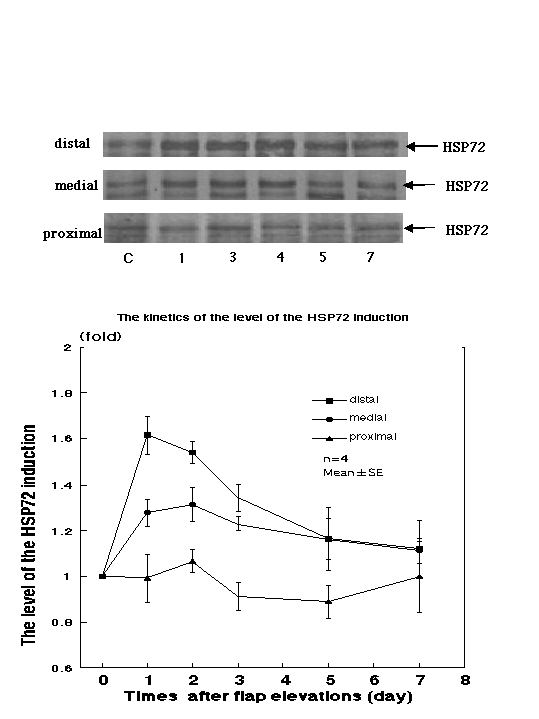Wednesday, October 29, 2003
3437
P18: The Stress Response of Rat Dorsal Skin Flap-Study of Induction of 72kd Stress Protein
In order to evaluate the stress response of rat dorsal skin flap, we investigated the induction of 72-kD stress protein. After flap elevation, the rat dorsal skin flap were harvested from proximal, medial and distal flap sites 0,1,2,3,5 and 7 days postoperatively (N=4 for each group) and the level of HSP72 was detected by Western blot analysis using anti HSP72 antibody. The level of HSP72 induction of each sample was defined as the relative amount to that of HSP72 induction of normal rat dorsal skin. In the proximal site, the level of HSP72 did not increase at any time. In the middle and distal sites, the level elevated after flap elevation and returned to the control level in the 7th postoperative day. The level in the distal site was higher than that of middle site in all periods studied but the 7th postoperative day. (The peak level in the middle site was 1.31±0.15 fold in the 2nd postoperative day, and the level in the distal site was 1.60±0.1 fold in the 1st postoperative day.) The histopathpological findings showed that there were no significant changes in proximal and middle sites at any time. In the distal site, there were slightly infiltration of neutrocyte around blood vessels and spongiosis and intracelluar edema of dermis in 2nd and 3rd postoperative day. These results suggest that the elevation of rat dorsal skin flap cause stress response in the cells of flap skin, even if there are significant histopathological change. In addition, the degree of stress response depends on the severity of degree of ischemia in rat dorsal skin flap.
View Synopsis (.doc format, 41.0 kb)
See more of Posters
Back to Plastic Surgery 2003 Complete Scientific Program
Back to Plastic Surgery 2003 Meeting home

